The popularity of the llama has increased in recent decades since people have been allowed to adopt these animals as pets. With their close relatives the alpacas, llamas are now found on many small farms for many reasons.
Historically, llamas were first domesticated in Peru around four thousand years ago and raised for many purposes including meat and milk production, fiber, leather production, and more. These long-necked mammals are also closely related to guanacos, vicunas, and alpacas.
Although llama herds are mostly found in Peru, Bolivia, Argentina, Chile, and Ecuador, they have been exported to other countries and are now being raised as companion animals. There are more than 155,000 llamas registered in the United States. If you’re thinking of adopting these furry creatures as pets, then you have come to the right place.
In this article, we will take a closer look at how to raise llamas properly, be it for commercial ventures or as a past-time.
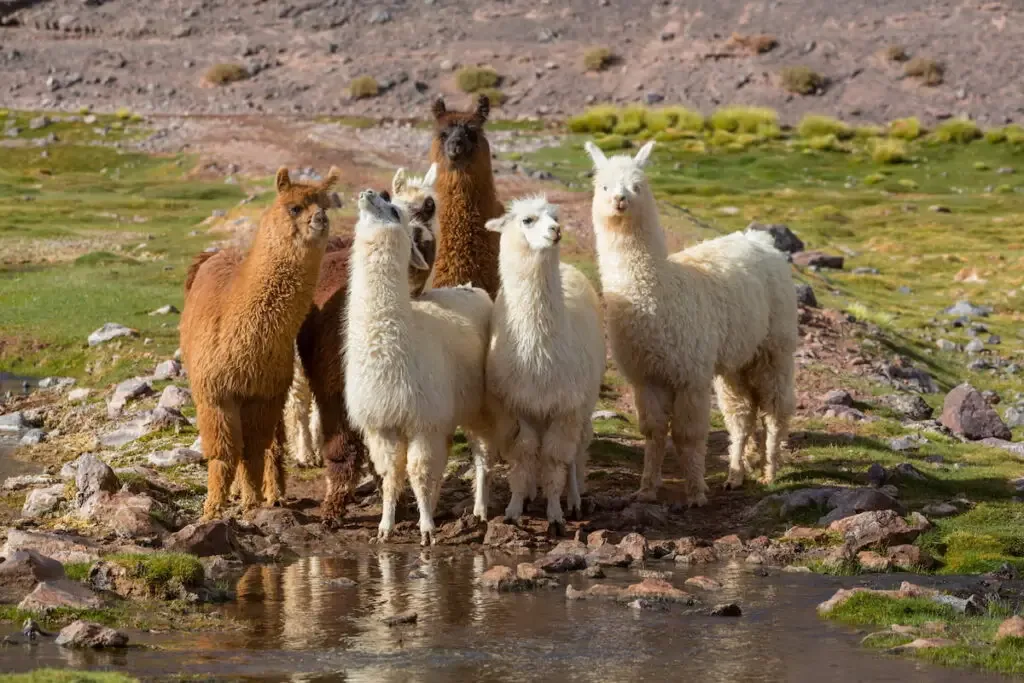
How to Choose High-Quality Llamas
When starting out, you should be clear on your reasons for raising llamas. Llamas can be raised for different purposes. If you choose to raise them as family pets, then finding trained ones that can socialize and mingle with a crowd of people would be your best bet.
If you want to raise them as show animals for exhibition or competition, then go for llamas with healthy, clean, thick fleeces.
Packing llamas for trekking requires you to have animals with the right gait that are docile and don’t spook easily when meeting strangers. But if you choose to breed llamas for profit, finding healthy studs and dams with a good medical history should be your first priority.
No matter what your goal is, llamas are generally easy to raise. They are herd animals by nature with a tendency to unite with their herd in the face of danger.
When you finally decided to purchase these animals, look for trustable and reputable breeders that can provide you with a proven medical history. Don’t be afraid to speak up and ask anything related to the llamas’ current health, past owners, and other details.
If possible, bring along friends or an experienced llama owner that could guide you in making the right choice. You can also reach out to the Alpaca and Llama Show Association (ALSA) and ask for their opinions on any reputable breeder in your area.

Shelter and Housing for Llamas
Although llamas prefer to roam and run freely in open fields, they also need to be sheltered from changing weather, especially during lengthy hot and cold seasons. So, there are two types of living spaces that you can provide for these animals, which are indoor and outdoor spaces.
As a general rule of thumb, you should provide at least 40 square feet of space for every llama in any indoor living space. Their housing also can be built from different materials, provided that they are strong and weather-resistant.
If you choose to go with a fully enclosed barn, be sure to include good ventilation inside this structure. You should also avoid bare concrete or hardwood floors and place slip-resistant mats or materials down to prevent any slips or falls that could injure these animals. Inside the shelter, llamas need comfortable bedding to rest and sleep in.
Dry, clean straw or wood chips can be used as bedding. Once or twice a week, you can remove any soiled straw that traps moisture. Wet or soggy bedding can increase their chance of getting sick, especially from the build-up of mold and mildew.
When summer comes, any indoor housing has the potential to trap heat while increasing the humidity inside the structure. Although dry living space is generally good for hygiene, llamas are prone to suffer from dehydration and exhaustion when the surrounding temperature is too high.
To combat this issue, you can install a thermometer and circulating fans to monitor and regulate the indoor temperature of their housing.
Conversely, during the winter, the temperature will drop and humidity tends to increase due to the absence of heat. This is where properly ventilated and insulated housing works the best. If you have extra funds, you can also install ceramic light bulbs or radiant floor heating to increase the heat inside their housing.
Llamas shouldn’t be restricted to indoor spaces for too long. They love to run and spend most of their time out in the field during the day. Their enclosure must be properly fenced with strong materials that are tall enough to prevent these animals from jumping and escaping.
Ideally, a four- to five-foot stock fence will be fine. You can also use corral boards to add more protection on the outside of the fence. Avoid using barbed wire, which can injure your llamas.
You should also provide pastures or grasses that are safe for llamas. Be vigilant and remove any toxic plants that might be dangerous. Ideally, they need to have at least an acre of land per animal. So, be sure to account for extra space if you intend to raise more than one llama. Depending on the quality of pasture, you can add hay and other minerals into their diet.
A key to healthy llamas is a clean and balanced diet. You can set up rotational pasturing by dividing the field into smaller paddocks. This will give each pasture enough room to recover after grazing without causing further damage to the soil.
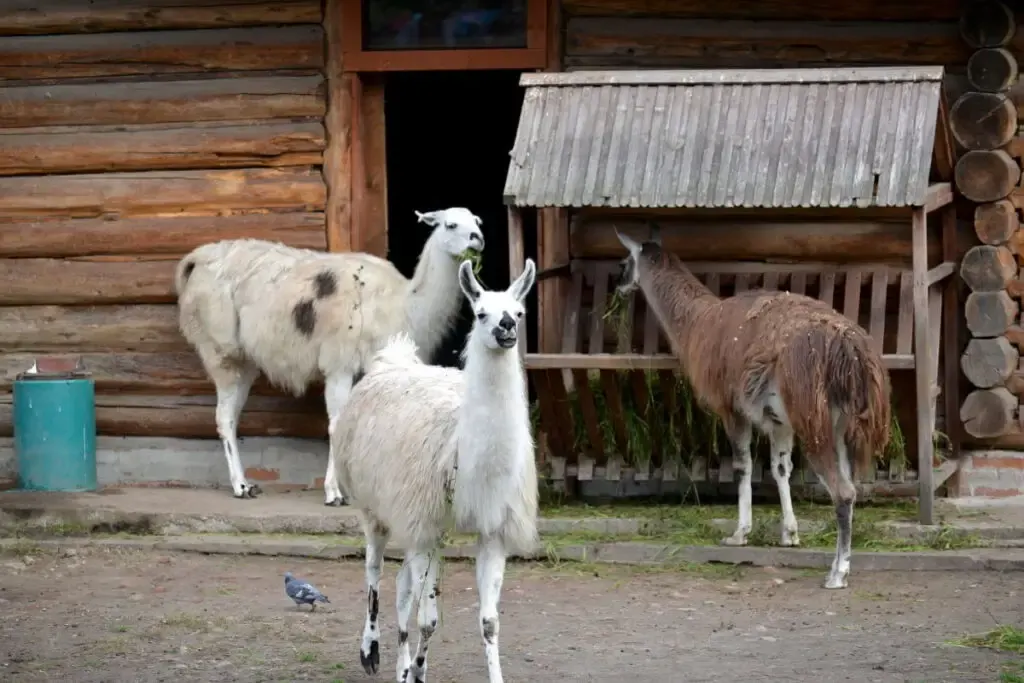
Llama Diet and Nutrition
Llamas are excellent grazers and browsers. So, they are generally hardy by nature. They possess a 3-chambered stomach that can digest coarse forage effectively, making them less susceptible to bloating. Feeding these herbivores is fairly simple.
Their diet mainly consists of forages such as grass or grass hay. Continuous access to forage will ensure good digestive health for these camelids.
Browse such as bushes, shrubs, and small trees can also provide them with different nutrients when they browse freely in the open fields. Additionally, you can also add a small amount of alfalfa into the diet of pregnant and lactating llamas.
One thing to note is that there is a maximum amount of dry fiber that they should consume per day. On average, llamas consume between 1.0% to 1.3% of their body weight up to a maximum of1.8 to 2.0 %. They also eat around 10 to 20 pounds of hay per day.
When feeding llamas with hay, try not to overfeed them with alfalfa hay. This is because the high concentration of protein and calcium in this type of hay can cause hypercalcemia and other nutrient imbalances. The safest and best option to go with is grass hay.
Grains are also a great source of carbohydrates and can also be included in a llama’s diet. However, grain should be fed sparingly to these camelids to avoid excess carbohydrates that can lead to weight problems. Always choose commercial pellets or grain feeds that are formulated for llamas based on their ages and life stages.
Aside from fiber and carbohydrates, llamas also need protein to facilitate their growth. Depending on their stages of growth and levels of activity, these animals need different amounts of protein in their diet. On average, adult llamas require around 8 to 10% protein in their feed.
Their ability to recycle and conserve nitrogen internally contributes to their lower protein needs. A diet that is high in legume hay and pasture grasses contains a high amount of protein. This type of food should not be fed excessively to llamas because it can cause various health issues.
When it comes to minerals and salt, llamas should have access to plain mineral salt blocks or plain loose salt mixes. These blocks or mixes can be served in dry buckets or feed pans, away from moisture or wet environments.
Avoid feeding these animals with mineral blocks that contain copper. This is because camelids possess a low threshold for toxicity of dietary copper. Copper toxicity can cause serious health issues in llamas or worse, sudden death.
Once you’re fully aware of their basic dietary needs, it is time to move on to treats that are safe for llamas. Not everything edible can be eaten by these camelids. There are some foods that can be served as treats such as:
- Pumpkin
- Carrot
- Celery
- Raisins
- Sweet potatoes
- Oranges
- Pears
- Apples
- Banana
- Watermelon
- Cantaloupes
- Fresh green beans
- Mango
Treats should be fed sparingly to avoid nutrient imbalance that can affect a llama’s health. For instance, sweet fruits that are high in glucose can lead to dental problems. Then, feeding these fruits without slicing them into smaller pieces can cause choking problems.
No matter which treats you give, proceed with caution and feed them sparingly. On the other hand, there are foods that should not be given to llamas, no matter how little their amount might be. These include:
- Meats and all kinds of animal products
- Avocado
- Chocolate
- Cherries
- Brassica
- Peas
- Plants from the nightshade family
- Sugary foods
- Kale
- Potato
- Lima beans
Last but not least, don’t forget to provide your llamas with an adequate supply of clean water. Llamas generally drink between 2 and 3 gallons of water per day. During hot seasons, they drink more than normal to prevent dehydration. If you’re living in a colder region, a water heater must be installed. Llamas may refuse to drink when the water is too cold.
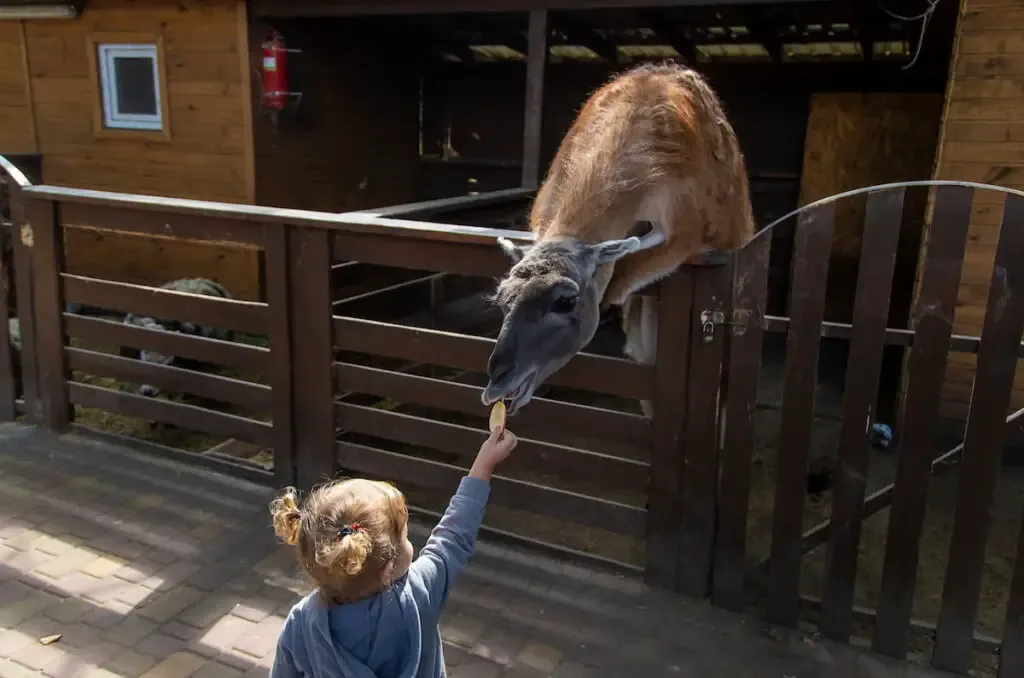
Caring for Your Llamas
Like many animals, llamas need some tender loving care from time to time. These include:
· Shearing
If you choose to raise wooly llamas, they should be sheared at least once a year. This can be done in the summer or during the winter. Llamas’ coats should only grow up to 3 inches in winter. Their undercoat should be reduced to an inch long in the summer depending on your location, the type of coat, and the way they tolerate different climates.
· Trimming
Llamas don’t have hooves. Instead, their feet consist of soft, leathery-like pads on the bottom with two toes covered with hard toenails. The toenails must be trimmed between three to six times a year, depending on the floor surface and weather conditions.
· Brushing
Depending on their coat type, you might have to brush your llamas to maintain the health and quality of their coat. Llamas can be divided into two categories: classic llamas and wooly llamas. With their double coats, classic llamas shed regularly. Hence, you should schedule a regular brushing routine to keep their coats healthy.
On the other hand, wooly llamas don’t shed. With dense body wool and neck fleece, they require shearing at least once a year.
· Bathing
Occasional bathing can remove any dirt clumps that are stuck in their coat. Make sure to use a high-quality shampoo that won’t irritate their skin.
· Training
Llamas are generally docile and easy to handle. But if you intend to raise them as pets, they should be trained from very young to adapt to their living space and follow your orders. Until you are able to do this all by yourself, you should hire professional trainers to do the job.
The Cost of Owning Llamas
Let’s face it: you can’t avoid thinking about all the costs and expenses that come with raising llamas. Generally, a llama can cost around $300 up to $5000, depending on the age, wool quality, history, gender, well-being, and temperament. Untrained llamas can cost between $400 and $900 per animal but llamas that are bred for packing and breeding can cost as much as $1500.
There will be additional expenses that you have to take into account. These include their medical bills, shearing and trimming charges if you choose to hire a professional shearer, sheltering and housing equipment, and other miscellaneous expenses.
On the other hand, the cost of feeding llamas is generally cheaper compared to other animals.
On average, one llama eats around one bale per week.
Depending on where you live, hay bales typically cost between $3 and $12 per 50-pound bale. Be ready to spend up to $20 per month for their feed. Additionally, if you choose to add a grain supplement into llamas’ diet, it will cost around $30 to $70 per pound bag of grain.
Lastly, expect to pay for permits or licenses if you’re living in a state that doesn’t allow you to raise these animals without any legal documentation. The land or property in which you will keep your llamas must also be zoned for livestock.
Before finalizing your purchase, check with your zoning authority, especially if you intend to transport your llamas across state lines. Be ready to pay for some paperwork, health screening, and vaccinations.

Breeding Your Own Llamas
There are a few things to consider before you decide on breeding your own llamas. The most basic requirements to breed llamas are healthy males and females. When choosing a mate for the female llama, be sure to check for any physical defects or conformation faults.
Being induced ovulators, female llamas don’t ovulate until they have been in contact with males. Their gestation period can be up to 375 days but on average, they are pregnant for 340 to 345 days.
Depending on your time, skills, and resources, you can breed llamas with two different methods. The first method is called pasture breeding, where females are introduced to the males in their field. After mating, the females should be removed immediately to prevent repeated matings that can result in intrauterine infections, stress, and even internal damage to the female.
Another breeding method that you can use is hand breeding. Hand breeding requires both the male and the male to be halter-trained and kept separately.
The male is placed in a pen or stable and the female is introduced for a mating session. After the initial meeting, they will be separated and the female will be reintroduced four days later. A female that hasn’t yet ovulated will let the male cover her. Keep reintroducing the female until she refuses to be in the same place with the male.
Llamas typically give birth during the day. First-time mothers don’t necessarily show any signs of them being about to give birth. But the most obvious clue that you can look for is by examining their mammary glands. Most pregnant llamas will produce milk between one and six weeks before giving birth. So, you have to be observant and monitor your llamas and their due dates closely.
If you don’t have the capability to breed these camelids, then you can hire professional breeders to do all the work. You can hire them to help you in doing your own breeding or they could provide you with selected male llamas that are ready to mate. Don’t hesitate to ask for any advice regarding this matter, no matter how trivial things might be.
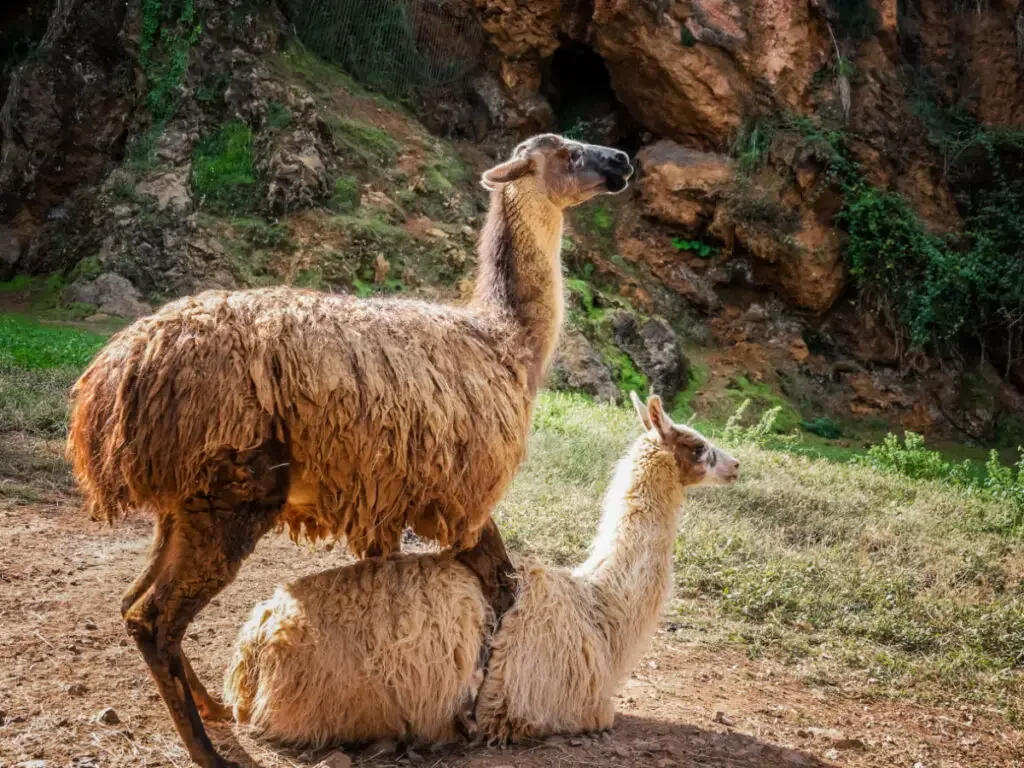
Llamas’ Health Management
Llamas are generally hardy and resistant to many diseases. However, this doesn’t eliminate the fact that they are still susceptible to certain illnesses.
One of the common health issues in llamas is parasite problems. These include internal parasites such as tapeworms, flukes, lungworms, gastrointestinal nematodes, meningeal nematodes, and external parasites such as lice, ticks, and mites.
Regular deworming and medicines approved by a veterinarian are some of the ways to combat this issue. A fecal examination is also one of the effective ways to detect any presence of internal parasites inside their bodies.
Like cattle and sheep, llamas are also prone to suffer from diseases that infect these farm animals. Some of the common health problems that you should be aware of are footrot, tuberculosis, coccidiosis, malignant edema, John’s disease, conjunctivitis, enterotoxemia, tetanus, anthrax, and anemia.
If you’re living in regions with high humidity and temperature, heat stress might affect these animals, especially if they have thick body fiber and weight problems.
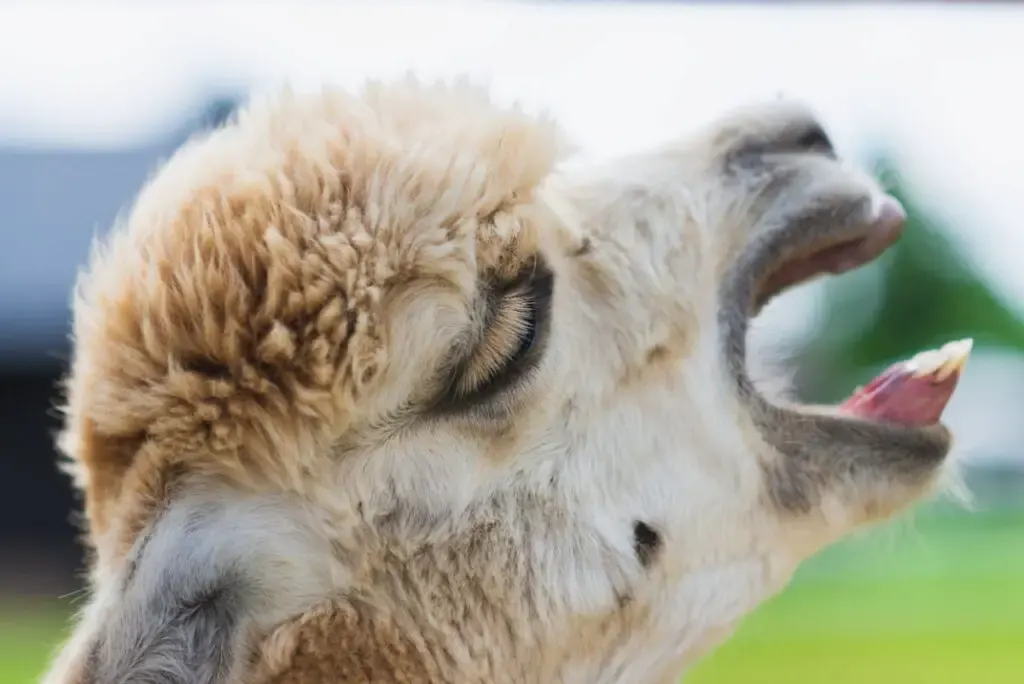
How to Generate Profits from Llamas
If you choose to look at llama farming as an investment, there are a few ways to monetize your operation and reap some profits from these animals. These include:
· Selling llama fiber
On average, an ounce of llama fleece is sold between $3 and $4 in the market. There is a demand for llama fiber due to its nature that is soft and lanolin-free.
· Selling llama meat
In the United States, ground llama meat is being sold for $59.99 per five pounds. Depending on their weight, the amount of meat that each llama could produce might vary. Venturing into the meat business is more profitable. But you must be prepared to set up a good marketing plan and hire people to help you.
· Selling llama milk
Llama milk is good for people who are lactose-intolerant. Their milk is nearly as delicious and nutritious as cow’s milk.
· Charging for a hiking companion
Well-trained and experienced llamas can be hired out to people who are looking to use these animals for hiking excursions. Choose the friendliest and best-trained llamas for this type of business. Once they are well-known, you can slowly increase the rate.
· Offering llamas for breeding
Aside from people offering their livestock for breeding, you can also offer these animals to other llama owners that are looking for a mating partner for their female llamas. You can set your own price depending on the health record, physical traits, and the quality of the male.
Final Thoughts
Llamas are definitely one of the exotic animals that you can raise for fun and profit. As long as they get all the basic necessities, they can live longer than their expected lifespan. If you are committed to raising these animals, there’s no reason why they can’t contribute to their owner in many different ways.
Citations
- https://farmhouseguide.com/ultimate-guide-to-raising-llamas
- https://opensanctuary.org/article/daily-diet-treats-and-supplements-for-llamas
- https://urbanlivestockvet.com/content/feeding-recommendations-alpacas-llamas
- https://www.jnkllamas.com/before-you-breed-your-male-or-female-llama
- https://www.britishllamasociety.co.uk/breeding-llamas
- https://farmdesire.com/llamas-farming/#How_to_take_Care_of_llamas
- https://www.motherearthnews.com/homesteading-and-livestock/all-about-raising-llamas
- https://www.thesprucepets.com/llamas
- https://www.petassure.com/new-newsletters/pet-llamas
- https://opensanctuary.org/article/building-a-good-home-for-llamas

